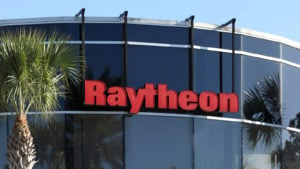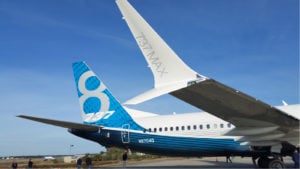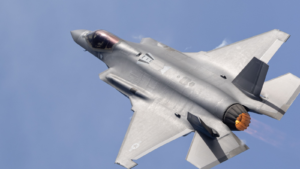
Space stocks will attract the eye of investors who are considering both their own and their grandchildren’s financial gains, as we stand on the cusp of an industry potentially expected to triple to $1.8 trillion.
SpaceX holds the leadership in launch frequency, but other commercial players, particularly in China, are emerging. The Chinese government intends 100 missions in 2024, up from 67 in 2023. Important missions include Queqiao-2 and Chang’e-6 moon sample returns. China wants to build its commercial space sector by launching Long March 12 and other launch vehicles.
North America, the largest space economy in 2023, will account for much of the growth in space stocks, notwithstanding China’s progress. The North American market is expected to grow 8% to $355.51 billion by 2033 from $170.63 billion in 2023 due to the National Defense Authorization Act 2024 and U.S. Space Force strategic objectives.
Still, considering space stocks are still a new area, it’s best to go with established enterprises, as they can afford to spend money on the division but not stake their entire reputation; the market reaction to certain technical issues with Virgin Galactic (NYSE:SPCE) flights is a testament to the unforgiving nature of the stock market in this area. In addition, we’ll explore companies with recent earnings beats, with upside as well.
RTX Corporation (RTX)

RTX Corporation (NYSE:RTX) (also known as Raytheon) is rallying for the last six months; shares of the aerospace and defense conglomerate are up over 19%, limiting the upside at 7% from the current price of around $100, but considering the recent earnings beat and its space exploration initiatives, expect RTX to make a run for the high target of $141.
Raytheon’s first-quarter 2024 revenue rose 6% to $6.66 billion. Adjusted operating profit rose 8% to $630 million, helping RTX report EPS of $1.34, a surprise of over 8%. Higher volume in land and air defense systems, particularly Global Patriot and counter-UAS systems, and advanced technology initiatives drove the rise.
RTX also raised the quarterly cash dividend to 63 cents per share, up 6.8% from the previous distribution; the corporation has paid yearly cash dividends since 1936.
In terms of space-focused developments, Raytheon recently secured a $506 million contract from NASA to design and build the Landsat Next Instrument Suite, which includes three brand-new spacecraft designed to observe Earth from low-Earth orbit.
Meanwhile, Collins Aerospace, an RTX firm, has advanced NASA’s next-generation spacesuit, passing zero-gravity tests for performance and fit.
Collins Aerospace has won a multi-billion-dollar subcontract to create equipment for the U.S. Air Force’s Survivable Airborne Operations Center working with SNC.
Boeing (BA)

For those who follow airline picks, Boeing (NYSE:BA) is well-known, but it’s also a major force in space stocks, with a possible 16% upside.
June saw the launch of NASA astronauts Butch Wilmore and Sunita Williams on the Boeing Starliner. In its first passenger voyage, Starliner docked with the International Space Station.
Leaks of helium and thruster issues hindered flying. Despite challenges, the crew successfully connected the spacecraft to the ISS, and the WorldView-3 satellite from Maxar Technologies took pictures of it. On the ISS, Wilmore and Williams assess Starliner’s technology. The ship’s value as an ISS emergency shelter is being evaluated.
During the Crew Flight Test, the Starliner’s mobility system was also scanned. If allowed, the Boeing Starliner would arrive at the International Space Station in 2025. The $4.2 billion NASA agreement of 2014 cannot be carried out without this authorization.
Apart from these developments in space exploration, Boeing is doing well on the bottom line. Boeing’s $16.6 billion first quarter 2024 sales were a difficult period because of fewer 737 deliveries and groundings. As analysts had predicted significantly worse, BA’s GAAP loss per share ($0.56) was a surprise of more than 25%.
Lockheed Martin (LMT)

Lockheed Martin (NYSE:LMT) is another major player among space stocks that recently beat earnings. For the March quarter, it reported an EPS of $6.33 versus an expected $5.83, an over 8% surprise. LMT’s upside remains limited at around 5%, though. Much like RTX, I expect it to make a run for its high target of $551.
For those looking into LMT from a space stocks angle, Lockheed Martin and Firefly Aerospace will launch 25 Alpha rockets between now and 2029.
NASA also selected Lockheed Martin to develop and manufacture NOAA’s next-generation GEO satellites to enhance weather predictions. This arrangement includes three satellites, with the option of more in the future.
In June, NASA’s Kennedy Space Center launched Lockheed Martin’s NOAA GOES-U weather satellite. This final GOES-R satellite transmits vital weather and climate data.
Lockheed Martin also integrated digital command and control with the first Joint Fires Network configuration during the US Indo-Pacific Command Valiant Shield exercise. This shows that Lockheed Martin’s high-tech products may benefit military and space research.
On top of everything else, Lockheed Martin developed and constructed NASA’s Artemis spacecraft, Orion. NASA plans to use Orion to return humans to the Moon and explore Mars.
On the date of publication, Faizan Farooque did not have (either directly or indirectly) any positions in the securities mentioned in this article. The opinions expressed in this article are those of the writer, subject to the InvestorPlace.com Publishing Guidelines.






